With a few exceptions, apples (Malus x domestica) need a nearby friend so they can pollinate each other and subsequently develop fruit.
You can’t just plant one tree and call it a day. You’ll get pretty flowers, but unless a close neighbor has one too, there won’t be any fresh apple pie on your Thanksgiving menu.
That’s okay, where one tree is good, two are better, right?
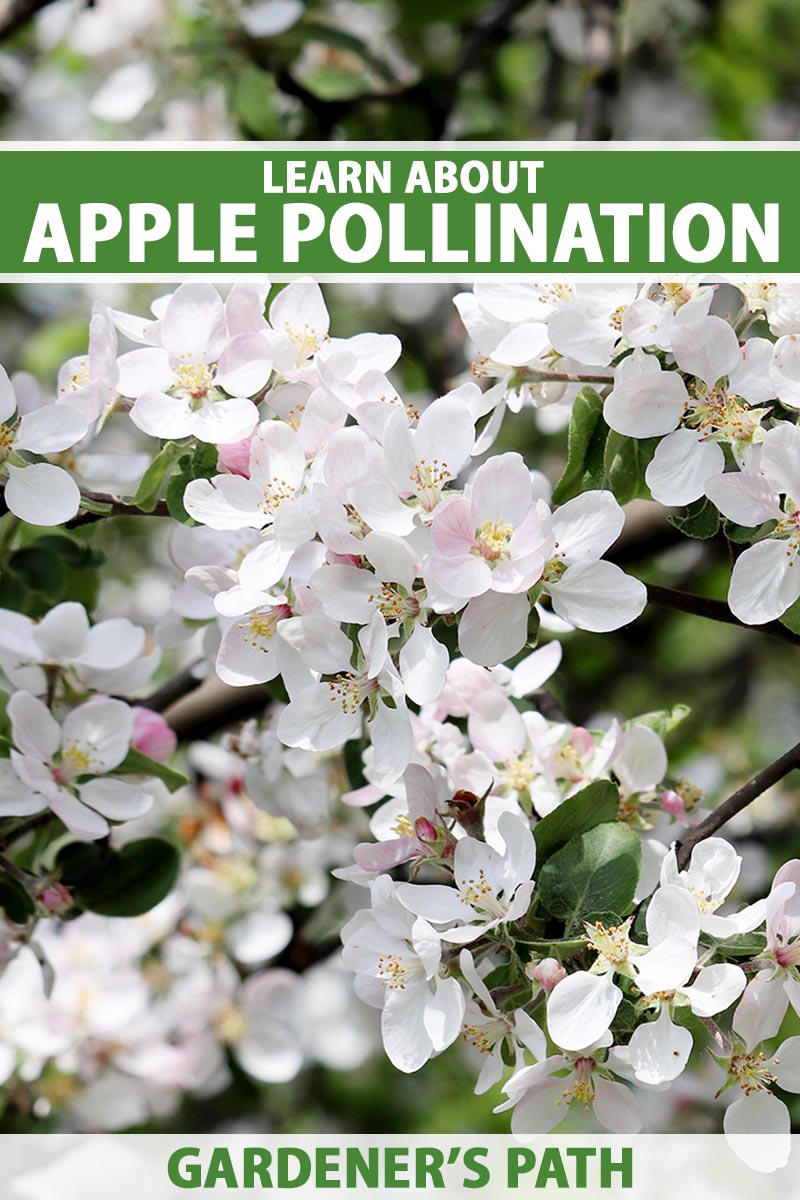
We link to vendors to help you find relevant products. If you buy from one of our links, we may earn a commission.
For the majority of apples that require a partner, it can’t be the same cultivar, but it must be one that blooms at the same time.
So a ‘Gala’ and a ‘Gala’ won’t work, but a ‘Gala’ and a ‘Braeburn’ will because they bloom at the same time as one another.
To make things easier, we group apple trees by their blooming period: early, early to mid, mid, mid to late, and late, along with some very late bloomers.
You may also see these represented as numbered bloom period groups from one to six, with one being the early bloomers and six being the very late bloomers.
As far as when apples may bloom goes, this is a pretty big window.
Early bloomers typically start flowering in early spring, while an extremely late bloomer might not start putting on a floral show until summer.
The general rule to remember is that a tree can pollinate anything in its own category as well as the ones immediately before and after it.
So a mid-season bloomer can pollinate an early to mid, mid, or mid to late tree.
Don’t worry if it’s not all totally clear yet. We’ll break it all down with the following:
What You’ll Learn
Pollination isn’t as complicated as it might sound. Really, so long as you plant two trees of the right types near each other, you should be fine. But if you want to get into the weeds, join me!
Let’s jump in by discussing what pollination means when growing apples to begin.
How Apples Are Pollinated
First, let’s define what pollination is:
It’s when the pollen, which contains the sperm, is mechanically transferred from the stamen to the stigma, the part of the female flower that receives the sperm.
Once that takes place, a zygote develops, which will eventually form into an embryo and then into a fruit containing seeds.
Those seeds are the reproductive part of the plant that is capable of forming new plants.
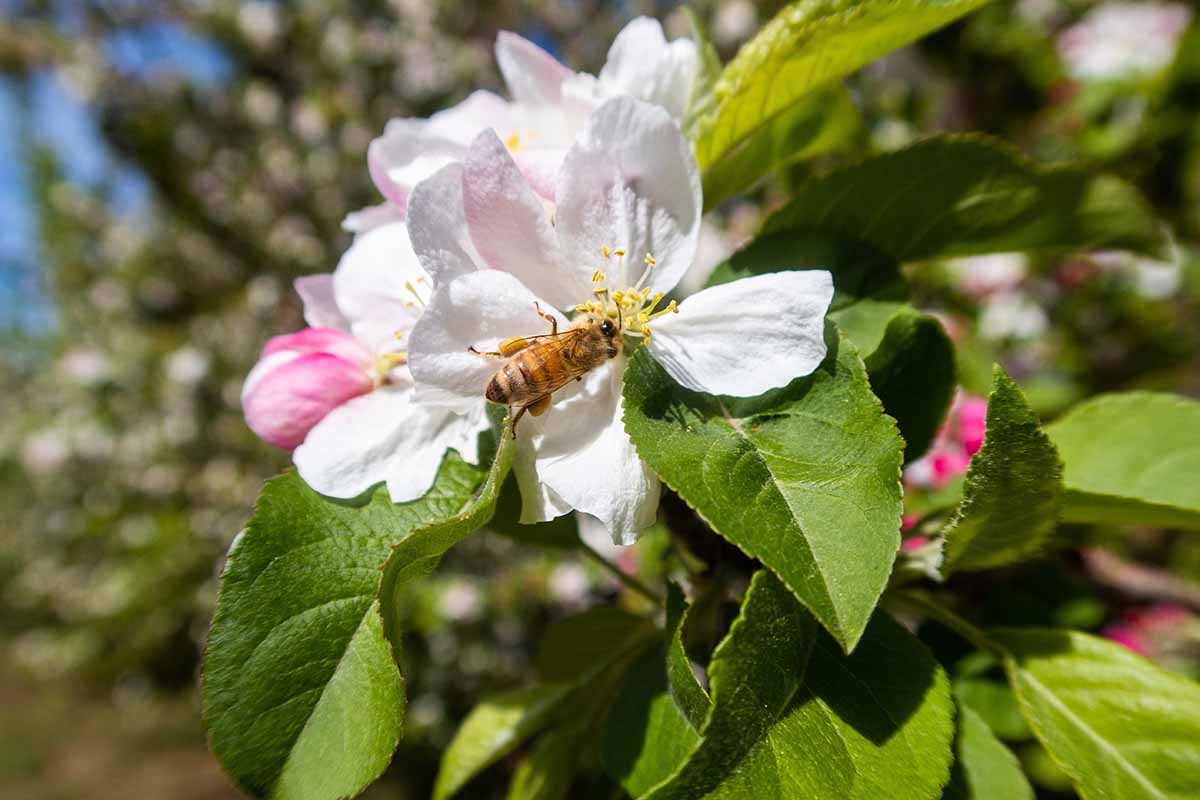
There are two types of pollination: cross- and self-pollination. Self-pollination is when a flower can send pollen from the stigma to the stamen on the same flower or on the same plant. Cross-pollination is when the pollen must come from a flower on a separate plant.
Cross-pollination helps to create genetic diversity, but it’s riskier for the plant because the pollen has to travel further.
With self-pollination, the stamen and the carpel mature at the same time.
If you’re like me and you tend to confuse at the botanical terms, the carpel is the central part of the flower. It contains the female reproductive parts, which are the ovary, style, and stigma.
In cross-pollination, plants have developed strategies to prevent self-pollination. This can take the form of physical barriers between the plant or flower parts maturing at different times. Apples use the second strategy.
In apples, the trees are hermaphroditic, which means each blossom has both male and female parts. But they can’t pollinate themselves.
Botanically, most apples show what is known as gametophytic self-incompatibility.
This means the egg cells and the sperm cells from the same plant can join together. But the pollen won’t travel down the style in order to merge with the ovules and develop into a zygote, which is the part that would eventually develop into a fruit.
Domestic Malus flowers are considered cosexual (or perfect) rather than being monoecious or dioecious plants.
Monoecious is a fancy way of saying that the female and male parts are produced by separate flowers on the same plant, while dioecious means the male and female flowers grow on separate plants.
Cosexual or perfect means the plant produces male and female parts on the same flower.
Since apples are largely self-incompatible (or self-unfruitful), and they can’t pollinate themselves, they need another tree of a different cultivar to pollinate them.
Some apple cultivars are semi-compatible or fully self-compatible, but there are far fewer of these.
In semi- and self-compatible trees, pollen from the same plant can merge and form a zygote, and eventually, a fruit. These plants still rely on pollinators, but the wind can also move the pollen.
We’ll call a few of these out, but just know that while they can produce fruit, they’ll yield a lot more if they have a companion.
To be pollinated, the flowers need insect pollinators to move the pollen from one tree to another. Heavy winds, rain, and extreme temperatures can suppress pollinator populations and reduce pollination.
Let’s assume that pollinators like bees were able to visit the flowers of one tree and move to a nearby specimen. In apples, pollen grains each have two sperm, which perform what is known as double fertilization.
When the pollen enters the flower, one of these fertilizes the egg cell, and the other joins the central cell nuclei.
Which, if you don’t remember from high school biology, is the part of the cell that contains the chromosomes. The result is a developing embryo, which will eventually become a fruit, and a built-in food source known as the endosperm.
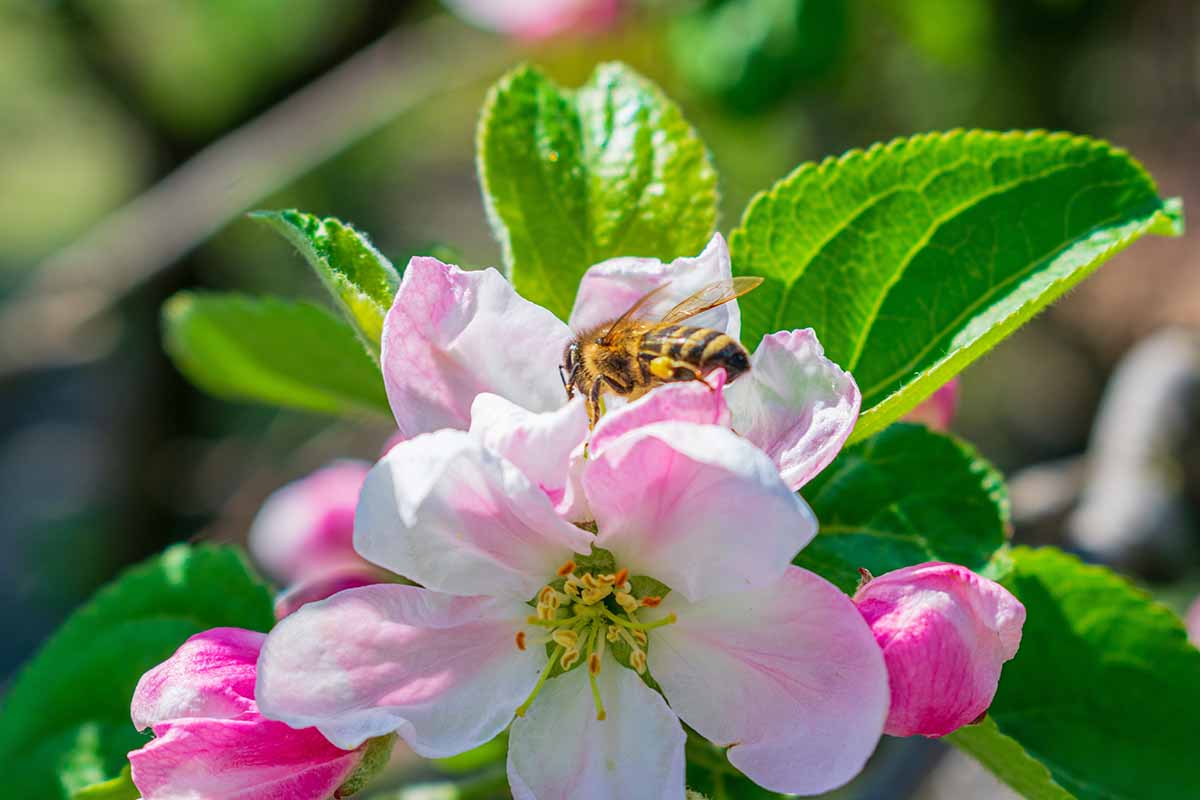
Honeybees (Apis mellifera) are the primary pollinator of apples, but wasps, flies, beetles, ants, and bees in the Hymenopterans, Dipterans, and Coleopterans genera can also pollinate domestic Malus trees.
In many plants, wind can move pollen for fertilization, but wind isn’t effective for self-incompatible types of apples.
Commercial growers will sometimes use helicopters and air blowers to disperse pollen and ensure it reaches its intended targets. Don’t worry, if you don’t have your own personal helicopter, you can support pollinators to do the work for you.
If all goes well, the fruit that develops is a clever adaptation that allows the tree to use us humans and other animals to spread its seeds around. We eat the flesh and spit out the seeds, potentially giving birth to a new tree.
This whole time, we thought we were making apple trees work for us, when really, we’re working for them. Look at what lengths we go to in order to help them spread and flourish.
Self-Fruitful Apples
Remember how we talked about those few trees that can pollinate themselves?
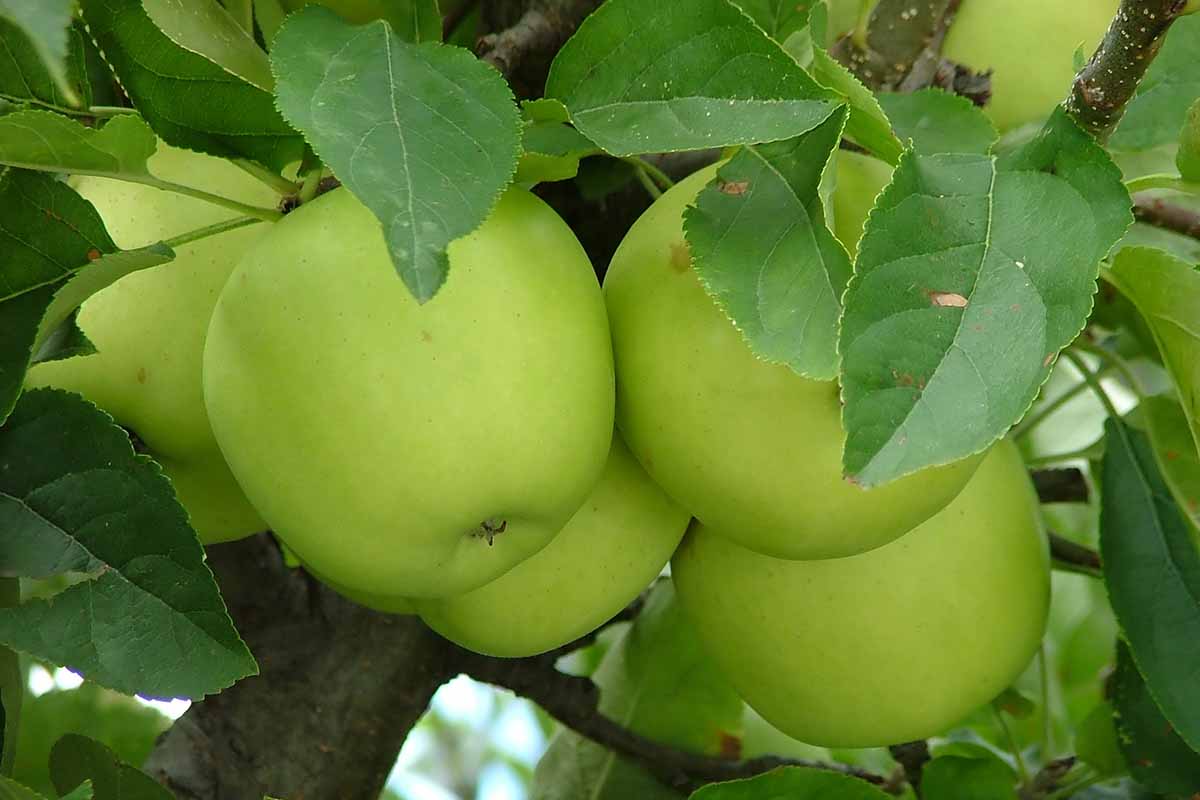
Some of the common apple cultivars that home growers will find at local nurseries or even big box stores are self-fruitful.
That means they are dioecious, or they have both male and female flowers and will pollinate themselves so long as pollinators help to move the good stuff from the male stamens to the female stigmas.
Cultivars like ‘Braeburn,’ ‘Cortland,’ ‘Crispin,’ ‘Fuji,’ ‘Golden Delicious,’ ‘Granny Smith,’ and ‘Jonathan’ are all at least partially self-fruitful.
‘Yellow Delicious’ is another self-fruitful option that produces extremely well on its own.
It’s a late-season bloomer and is valued as a pollinator, so it grows well with a companion though it doesn’t need one. It’s cold and heat tolerant, and super vigorous.
Pick up a semi-dwarf ‘Yellow Delicious’ in a four- to five-foot height at Nature Hills Nursery.
But no matter how marvelously a tree can pollinate itself, it will always produce more fruits that are larger in size if it has a pollinating companion.
If you’re able, plant a companion for the best harvests.
Triploid Apples
Now that we’ve talked about self-fruitful types, let’s look at those on the other end of the spectrum: triploids.
Some cultivars produce pollen that is effectively sterile.
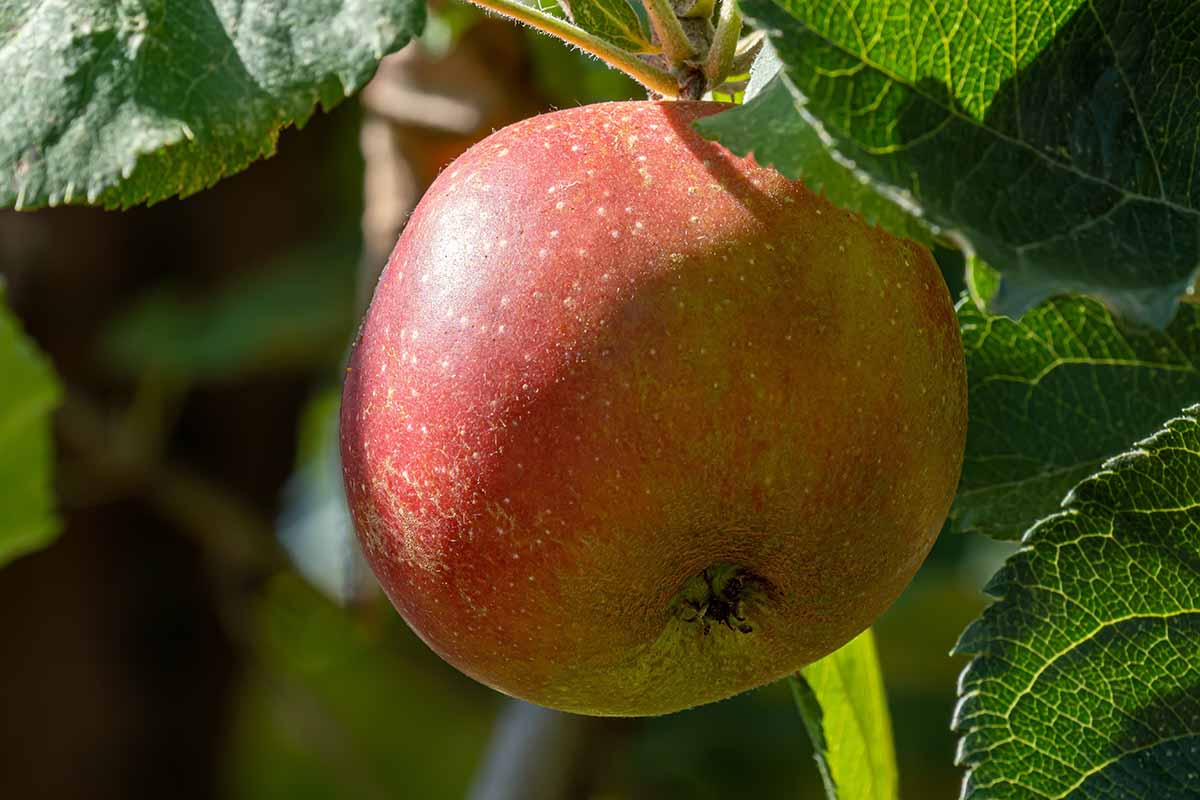
These cultivars are called triploids because they have a genetic abnormality that results in an extra set of chromosomes.
This abnormality renders their pollen sterile to other trees. These need pollination from other trees to produce fruit, but they can’t offer up their own pollen in return.
‘Arkansas Black,’ ‘Baldwin,’ ‘Belle de Boskoop,’ ‘Blenheim Orange,’ ‘Buckingham,’ ‘Crimson King,’ ‘Fallawater,’ ‘Fall Pippin,’ ‘Jonagold,’ ‘Paragon,’ ‘Ribston Pippin,’ ‘Roxbury Russett,’ ‘Stark,’ and ‘Winesap’ are all triploids and can’t be used as pollinators.
If you grow one of these, you’ll need two other trees to pair with them that fall into the same pollinator group, so they’re best left to people who have lots of room for an orchard.
So, if they take so much extra work, why grow them? Triploids are super adaptable to a range of environments and temperatures. They’re more resistant to diseases and pests. And these trees are also extremely vigorous and productive.
Commercial producers often use them because they have lots of room for multiple specimens that take less work and chemicals to grow.
Best Pollinators
Surprise! The best pollinators for apples aren’t apple trees at all. They’re crabapples (Malus spp.).
Crabapples bloom for a much longer period than apples and they produce more blooms that are also larger. These big old blooms usually have more pollen and are more attractive to pollinators.
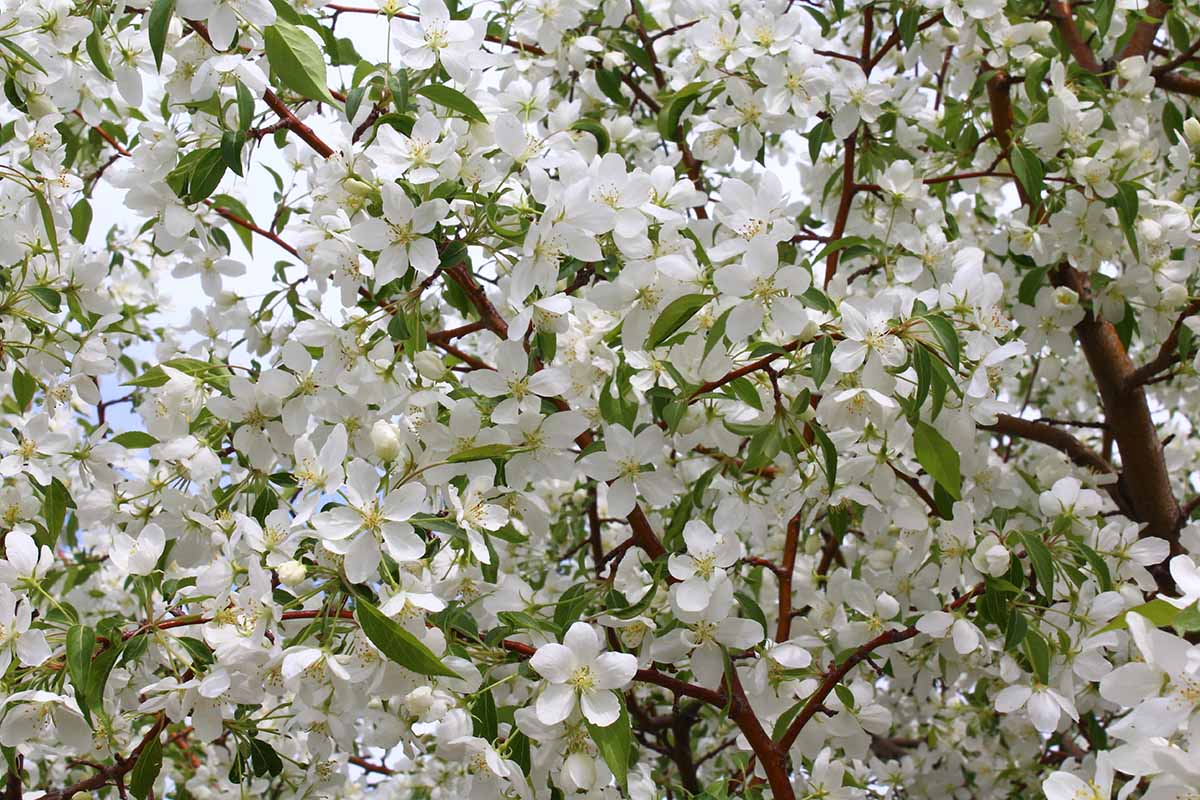
The downside to crabapples is that you’ll have to deal with the waste if you don’t use the fruits that grow on the trees.
It’s also a waste of your precious space if you only have enough garden area for productive apple trees.
Early to midseason crabapples can pollinate apples in groups one, two, three, and four.
Midseason to late cultivars/varieties can pollinate apples in group three, four, five, and six. Here are some common early to midseason crabapples:
- Chestnut
- Manchurian
- Mt. Evereste
- Wickson
Here are some midseason to late crabapples:
- Crimson Gold
- Frettingham
- Indian Summer
- Mt. Blanc
- Simpson
- Snodrift
- Whitney
Don’t feel hemmed in. Any crabapple will work.
But insect pollinators will sometimes ignore flowers that are distinctly different from the apples you want to pollinate, and extremely deep red or bright pink ornamental crabapples will probably result in less pollination.
If your main goal is to pollinate your apple trees, choose a crabapple with pale pink or white flowers.
‘Profusion’ is a favorite ornamental hybrid for home growers with masses of pinkish-purple flowers.
But despite the bright pink blossoms, this cultivar blooms for nearly six weeks, so the flowers stick around for a long, long time. It can pollinate all but late and very late apples (numbers five and six).
Snag yourself one at Fast Growing Trees.
For a marvelous white option, Sargent (M. sargentii) is a killer choice. It’s incredibly tough, reliable, and can even tolerate some drought.
It’s fairly compact at just 10 feet tall, but it can handle the job of pollinating a tree twice its size.
This one is also available at Fast Growing Trees. It’s an early-to-mid-season type.
‘Donald Wyman’ is a pretty hybrid with fragrant, pale pink flowers. It’s incredibly tough and nearly impossible to kill.
Purchase this early-to-mid-season bloomer as a four- to five-foot bare root plant from Nature Hills.
Check out our guide to growing crabapples to learn more.
Pollinator Groups and Timing
Most nursery tags will tell you which category a given cultivar falls in. They may list it according to seasonal flowering group or by group number.
Let’s dive into the individual groups and what they mean.
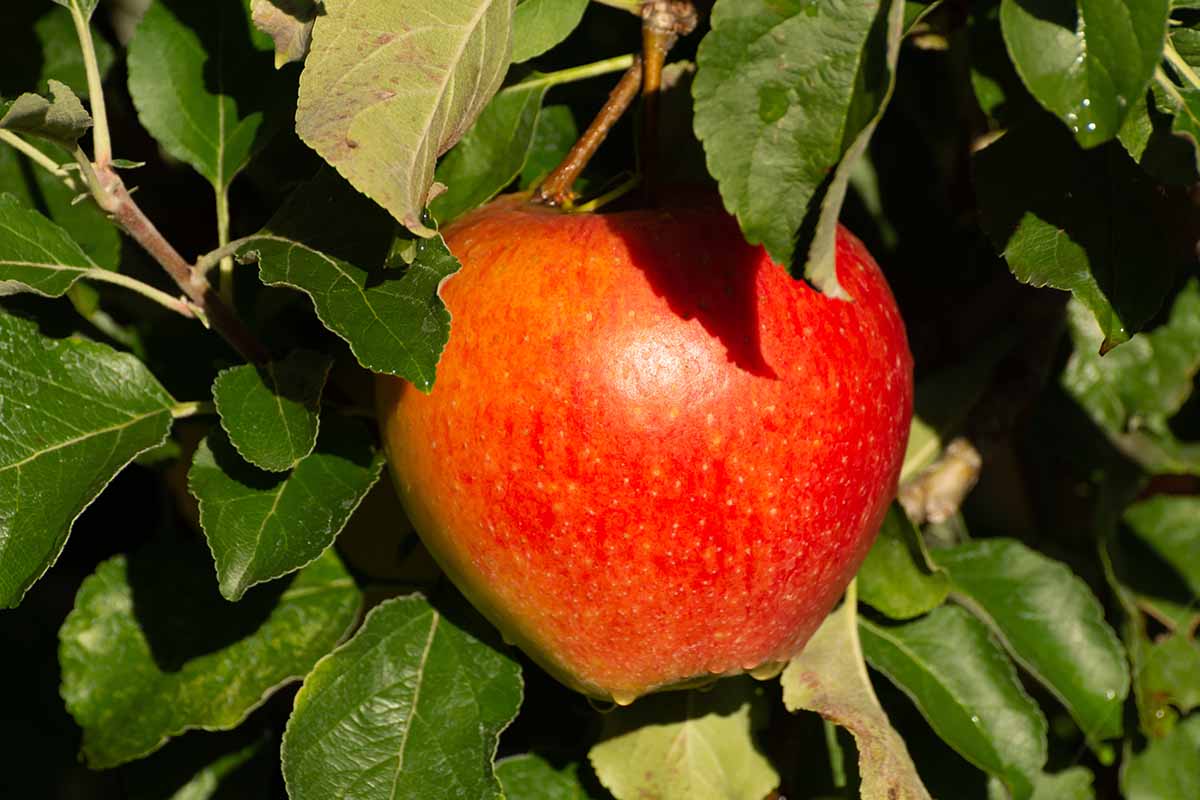
Early-blooming plants in group one can pollinate early and early to mid-season types. Here are some common options:
- Early Harvest
- Empire
- Gibbon’s Russet
- Red Delicious
- Stark Earliest
Those in the early- to mid-season group, also known as group two, can pollinate early, early to mid, and mid-group apples. Here are a few of those:
- Ambrosia
- Baker’s Delicious
- Ben’s Red
- Bismark Kerry Pippin
- Camelot
- Idared
- Jonagored
- Lodi
- McIntosh
- Washington
The mid-season group, or group three, is capable of pollinating early to mid, mid, and mid to late trees. This is one of the biggest groups. Here are some common cultivars:
- Alexander
- Bountiful
- Cox’s Orange Pippin
- Crispin
- Discovery
- Falstaff
- Fuji
- Granny Smith
- Jonathan
- King Russett
- Macoun
- Ontario
- Pink Lady
- Pink Perfection
- Queen Cox
- Red Jonathan
- Red Devil
- Spartan
- Sunset
- Waltz
- Wealthy
- Winter Gem
The mid to late group, aka group four, can pollinate mid, mid to late, and late trees. Here are some mid to late options:
- American Mother
- Barnack Beauty
- Braeburn
- Delicious
- Empire
- Gala
- Golden Delicious
- Honeycrisp
- Monarch
- Pixie
- Red Delicious
- Red Fiji
- Red Sentinel
- Smoothee
- Winston
Late group apples or those in group five can pollinate mid to late and late types, as well as those that fall into the uncommon very late group. These include:
- Cameo
- Coronation
- King of Pippins
- Golden Noble
- Isaac Newton
- Lawspur Rome
- Northern Spy
- Red Rome
- Ruby Jon
- Winecrisp
Very late apples, group six, are self-fruitful cultivars that can pollinate themselves as well as those in the late group. These aren’t common. A few cultivars you may come across are:
- Bess Pool
- Court Pendu
- Dabinette
- Crawley Beauty
- Laxton’s Royalty
Ensure Pollination in Your Garden
So, now you know that you need multiple trees that will bloom at a similar time. There are a few other things to also keep in mind.
Apples need to be planted within 100 feet of one another to ensure pollination. You can read more about fruit tree spacing in our guide.

Pollinators must be growing within 100 feet of the target tree. Anything further and pollination will be sparse, at best.
Choose trees that are similar in size. A tiny little dwarf isn’t going to provide enough pollination opportunities for a standard tree.
Finally, encourage pollinators to visit your yard. We have a comprehensive guide to pollinator superstars and how to design your garden for maximum pollination if you need some tips.
Mason bees (Osmia lignaria) are some of the most effective pollinators out there.
They don’t make any honey, but they can keep your garden in pollinator heaven if you decide to keep them by starting a hive or installing a bee house.
If you’ve never seen bee houses before, they’re an excellent way to invite mason bees to your yard without the work of a hive.

This one from Amazon has worked better than any other I’ve tried for attracting bees.
Get Ready for the Harvest
See? It’s almost as easy as one, two, or maybe three trees! You’ve got the fundamentals now. All you need to do is pick your cultivars and start planting those apples.

Which tree combos are you thinking of grabbing? What’s your favorite cultivar? Let us know in the comments section below!
Now that you’re well on your way to an abundance of apples, you might be looking out for more information on how to care for and use up your fruits.
If so, here are a few guides that you might want to check out:
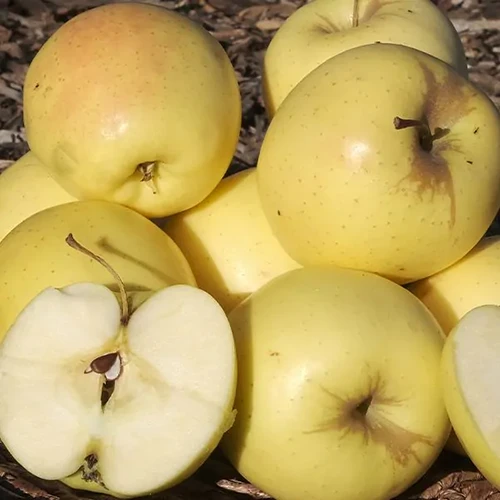
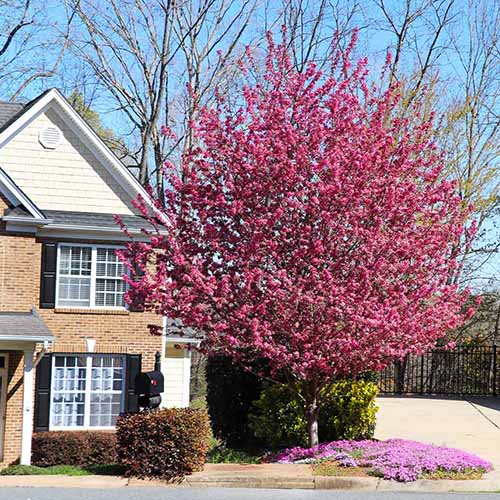

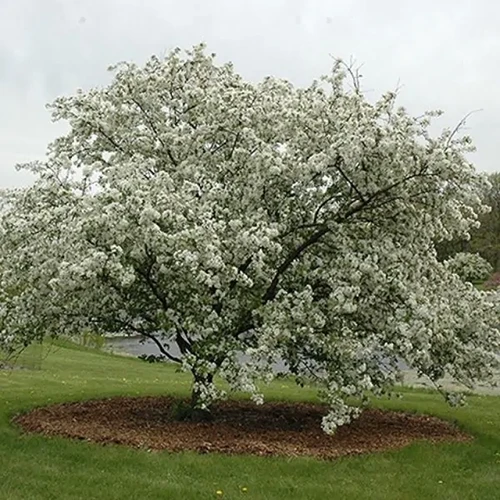
I did some research on the internet for an apple tree to pollinate my Jonagold. I read a golden delicious would, I got a yellow delicious. Now I am totally confused. What apple tree will pollinate my Jonagold besides a crabapple?
Hi Danielle, I know, apple pollination is a complex, confusing world. ‘Burgundy,’ ‘Cortland,’ ‘Cox’s Orange Pippen,’ ‘Empire,’ ‘Fuji,’ ‘Gala,’ ‘Gilpin,’ ‘Granny Smith,’ ‘Honeycrisp,’ ‘Northern Spy,’ and ‘Red Delicious’ are all good options.